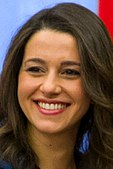| |||||||||||||||||||||||||||||||||||||||||||||||||||||||||||||||||||||||||||||||||||||||||||||||||||||
All 135 seats in the Parliament of Catalonia 68 seats needed for a majority | |||||||||||||||||||||||||||||||||||||||||||||||||||||||||||||||||||||||||||||||||||||||||||||||||||||
|---|---|---|---|---|---|---|---|---|---|---|---|---|---|---|---|---|---|---|---|---|---|---|---|---|---|---|---|---|---|---|---|---|---|---|---|---|---|---|---|---|---|---|---|---|---|---|---|---|---|---|---|---|---|---|---|---|---|---|---|---|---|---|---|---|---|---|---|---|---|---|---|---|---|---|---|---|---|---|---|---|---|---|---|---|---|---|---|---|---|---|---|---|---|---|---|---|---|---|---|---|---|
| Opinion polls | |||||||||||||||||||||||||||||||||||||||||||||||||||||||||||||||||||||||||||||||||||||||||||||||||||||
| Registered | 5,510,853 | ||||||||||||||||||||||||||||||||||||||||||||||||||||||||||||||||||||||||||||||||||||||||||||||||||||
| Turnout | 4,130,196 (75.0%) | ||||||||||||||||||||||||||||||||||||||||||||||||||||||||||||||||||||||||||||||||||||||||||||||||||||
| |||||||||||||||||||||||||||||||||||||||||||||||||||||||||||||||||||||||||||||||||||||||||||||||||||||
 Election result by constituency | |||||||||||||||||||||||||||||||||||||||||||||||||||||||||||||||||||||||||||||||||||||||||||||||||||||
| |||||||||||||||||||||||||||||||||||||||||||||||||||||||||||||||||||||||||||||||||||||||||||||||||||||
The 2015 Catalan regional election was held on Sunday, 27 September 2015, electing the 11th Parliament of the autonomous community of Catalonia. All 135 seats in the Parliament were up for election. This was the third regional Catalan election in only five years, after the 2010 and 2012 elections and the first one in over 37 years in which Democratic Convergence of Catalonia (CDC) and Democratic Union of Catalonia (UDC) ran separately, after the dissolution of Convergence and Union (CiU) in June 2015 over disagreements on the coalition's separatist turn.
The plan to hold a snap election in 2015 was announced on 14 January by President Artur Mas. After the non-binding 2014 independence referendum, Mas declared that the election was to be turned into an alternative vote on independence, with pro-independence parties including the independence goal in their election manifestos.[1] As part of the process, CDC, along with Republican Left of Catalonia (ERC), Democrats of Catalonia (DC) and Left Movement (MES) would run together under the Junts pel Sí (JxSí) platform, with support from members of the pro-independence Catalan National Assembly (ANC), Òmnium and the Municipalities' Association for Independence (AMI). The alliance, however, failed to achieve its self-stated goal to attain an absolute majority on its own.
Newly formed Podemos (Spanish for "We can"), Initiative for Catalonia Greens (ICV), United and Alternative Left (EUiA) and Equo stood together under the Catalunya Sí que es Pot (Catalan for "Catalonia yes we can") label, a second novel electoral grouping formed for this election. The alliance was modeled after the Barcelona en Comú platform that won the 2015 Barcelona election, but it failed to garner the decisive support of the city's popular mayor Ada Colau and saw a poor performance. Citizens (C's) benefited from its anti-independence stance and climbed to second place ahead of a declining Socialists' Party of Catalonia (PSC), which scored a new historical low for the third election in a row. The People's Party (PP) suffered from its national counterpart decline and scored its worst result since 1992, whereas the left-wing Popular Unity Candidacy (CUP) saw a strong performance which allowed it to hold the key to government formation with JxSí.
Cite error: There are <ref group=lower-alpha> tags or {{efn}} templates on this page, but the references will not show without a {{reflist|group=lower-alpha}} template or {{notelist}} template (see the help page).
- ^ "Mas gana el pulso a ERC y convoca elecciones para el 27 de septiembre". El País (in Spanish). January 14, 2015. Retrieved February 3, 2020.





